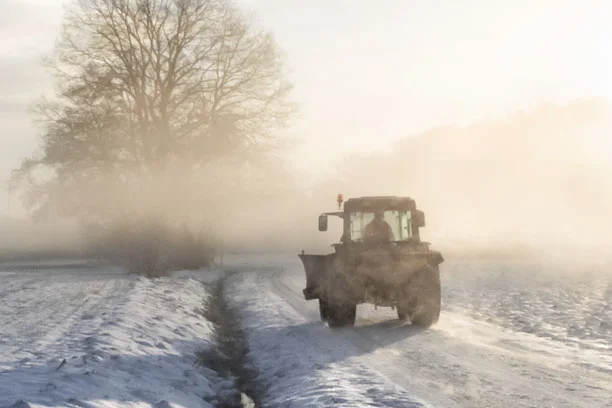Working in Cold Weather: 4 Safety Tips for Farmers and Ranchers


We understand farming and ranching chores and duties don’t stop just because snow, ice and cooler temps have arrived, but Old Man Winter can bring hazards. Remember to use the buddy system whenever possible and work during the warmest part of the day. Heed these additional safety tips for working in cold conditions.
The wind chill factor plays a big role in whether you should skip working outside in cold weather. Wind chill temperature measurements are the actual effect cold weather will have on your exposed skin. Even if the air temperature seems reasonable, a harsh wind chill can make conditions too dangerous for prolonged work. The Occupational Safety and Health Administration (OSHA) has an easy-to-read chart, created by the American Conference of Governmental Industrial Hygienists (ACGIH), that tells you in what wind chill conditions outdoor work is not advisable. Be mindful of any health conditions you may have that could make working in extreme conditions riskier.
Taking indoor breaks is a key component of working in cold weather safely. You can follow the work and warmup schedule listed on the above chart for varying conditions. During those breaks, be sure to check your body for signs of cold stress. (See below.) Sip a warm, sweet beverage to help re-energize the body, and eat a warm, high-calorie snack or meal. Avoid caffeine and alcohol. To keep your house cozy for breaks or post-work rest, check out our tips.
OSHA recommends wearing at least three layers of clothing to ward off the chill. Start with a base layer against skin. Then add an insulating layer in the middle, and a wind and water-resistant outer layer that has a bit of ventilation. Never wear cotton in cold or wet weather. It absorbs moisture and dries slowly. Synthetic fabrics, wool and silk are all safer options. Choose loose-fitting layers to avoid circulation issues. Wear protection for your face and mouth as well, if needed. A hat and gloves are a must to protect skin and prevent heat from escaping. A good pair of insulated, waterproof boots will do the trick for your feet.
Cold stress happens when the external temperature drives down skin temperature and eventually body temperature. OSHA says the most common cold-induced illness and injuries involve hypothermia, frostbite and trench foot. In the event of an emergency, call 911.
Using these tips, you’re sure to stay safe this winter. But is your farm or ranch protected? Safeguard what matters most with help from your Farm Bureau agent today.